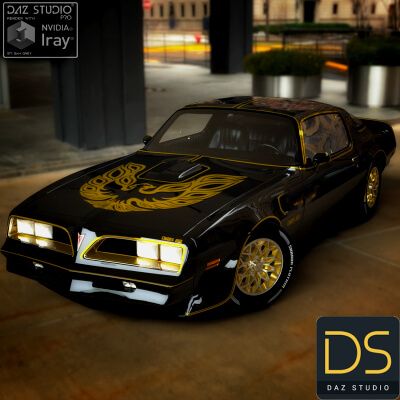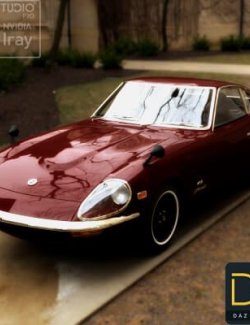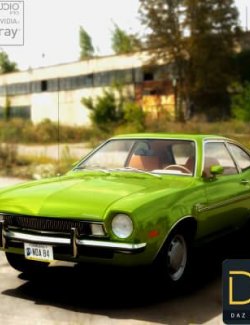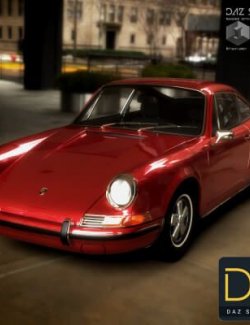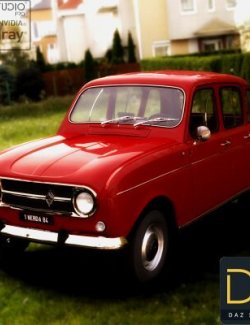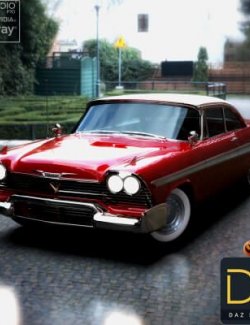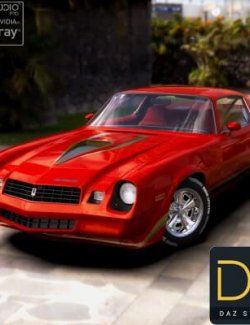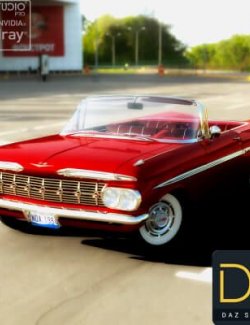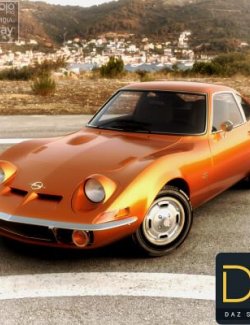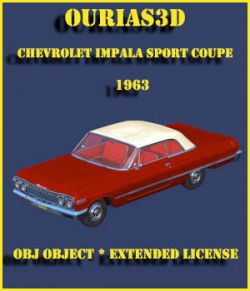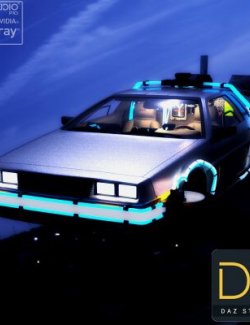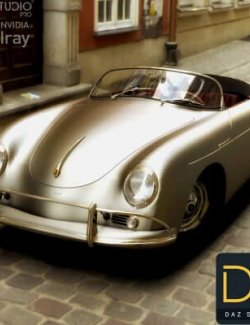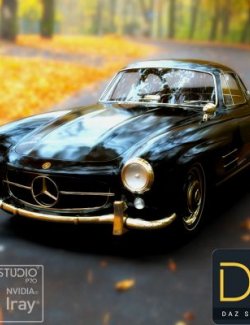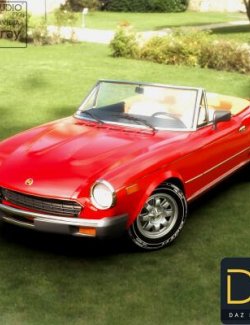The Pontiac Firebird is an American automobile built and produced by Pontiac from the 1967 to 2002 model years.Designed as a pony car to compete with the Ford Mustang, it was introduced on February 23, 1967, five months after GM's Chevrolet division's platform-sharing Camaro. This also coincided with the release of the 1967 Mercury Cougar, Ford's upscale, platform-sharing version of the Mustang. The name "Firebird" was also previously used by GM for the General Motors Firebird series of concept cars in the 1950s.
First generation (19671969)
The first generation Firebird had characteristic Coke bottle styling shared with its cousin, the Chevrolet Camaro. Announcing a Pontiac styling trend, the Firebird's bumpers were integrated into the design of the front end, giving it a more streamlined look than the Camaro. The Firebird's rear "slit" taillights were inspired by the 19661967 Pontiac GTO and Pontiac Grand Prix. Both a two-door hardtop and a convertible were offered through the 1969 model year. Originally, the car was a "consolation prize" for Pontiac, which had desired to produce a two-seat sports car based on its original Banshee concept car. However, GM feared this would cut into Chevrolet Corvette sales, and gave Pontiac a piece of the "pony car" market by sharing the F-body platform with Chevrolet. The listed retail price before options for the coupe was $2,666 ($24,361 in 2023 dollars) and the convertible was $2,903 ($28,519 in 2023 dollars)
The 1967 base model Firebird came equipped with the Pontiac 230 cu in (3.8 L) SOHC inline-six. Based on the architecture of the standard Chevrolet 230 cu in (3.8 L) inline-six, it was fitted with a one-barrel Rochester carburetor and rated at 165 hp (123 kW).[2] The "Sprint" model six came with a four-barrel carburetor, developing 215 hp (160 kW).[10] Most buyers opted for one of three V8s: the 326 cu in (5.3 L) with a two-barrel carburetor producing 250 hp (186 kW); the four-barrel "HO" (high output) 326, producing 285 hp (213 kW); or the 325 hp (242 kW) 400 cu in (6.6 L) from the GTO. All 19671968 400 CI engines had throttle restrictors that blocked the carburetors' secondaries from fully opening. A "Ram Air" option was also available, providing functional hood scoops, higher flow heads with stronger valve springs, and a hotter camshaft. Power for the Ram Air package was the same as the conventional 400 HO, but peaked at 5,200 rpm.
The 230 cu in (3.8 L) engines were subsequently enlarged for 1968 to 250 cubic inches (4.1 liters), the base version developing an increased 175 hp (130 kW) using a one-barrel carburetor, and the high-output Sprint version the same 215 hp with a four-barrel carburetor. Also for the 1968 model, the 326 cu in (5.3 L) engine was replaced by the Pontiac 350 cu in (5.7 L) V8, which actually displaced 354 cu in (5.8 L), and produced 265 hp (198 kW) with a two-barrel carburetor. An HO version of the 350 cu in (5.7 L) with a revised cam was also offered to start in that year, which developed 320 hp (239 kW). The power output of the other engines was increased marginally.
There was an additional Ram Air IV option for the 400 cu in (6.6 L) V8 engines during 1969, complementing the Ram Air 400(now often colloquially but incorrectly called the "Ram Air III," a name never used by Pontiac). The Ram Air IV was rated at 345 hp (350 PS; 257 kW) at 5000 rpm and 430 lbft (583 Nm) of torque at 3400 rpm;[11] and 335 hp (340 PS; 250 kW) respectively. The 350 cu in (5.7 L) HO engine was revised again with a different cam and cylinder heads resulting in 325 hp (242 kW). During 1969 a special 303 cu in (5.0 L) engine was designed for Sports Car Club of America (SCCA) road racing applications that were not available in production cars.
Modifications for 1968 included the addition of federally-mandated side marker lights: for the front of the car, the turn signals were made larger and extended to wrap around the front edges of the car, and on the rear, the Pontiac (V-shaped) Arrowhead logo was added to each side. The front door vent-windows was replaced with a single pane of glass and Astro Ventilation, a fresh-air-inlet system. The 1969 model received a major facelift with a new front-end design but unlike the GTO, it did not have the Endura bumper. The instrument panel and steering wheel were revised. The ignition switch was moved from the dashboard to the steering column with the introduction of GM's new locking ignition switch/steering wheel.
In March 1969, a US$1,083 ($8,998 in 2023) optional handling package called the "Trans Am performance and appearance package", UPC "WS4", named after the Trans Am Series, was introduced. A total of 689 hardtops and eight convertibles were made.
Due to engineering problems that delayed the introduction of the new 1970 Firebird beyond the usual fall debut, Pontiac continued production of 1969 model Firebirds into the early months of the 1970 model year (the other 1970 Pontiac models had been introduced on September 18, 1969). By late spring of 1969, Pontiac had deleted all model-year references on Firebird literature and promotional materials, anticipating the extended production run of the then-current 1969 models.
Second generation (19701981)
The second-generation debut for the 1970 model year was delayed until February 26, 1970, because of tooling and engineering problems; thus, its popular designation as a 1970 model, while leftover 1969s were listed in early Pontiac literature without a model-year identification. This generation of Firebirds were available in coupe form only; after the 1969 model year, convertibles were not available until 1989.
Replacing the "Coke bottle" styling was a more "swoopy" body style, while still retaining some traditional elements. The top of the rear window line went almost straight down to the lip of the trunk lid. The new design was initially characterized by a large C-pillar, until 1975 when the rear window was enlarged. Originally, the "wraparound" style window that occupied more of the c-pillar was initially supposed to be the design, but problems with the glue and sealing of the rear window led to the flat style window being used until the re-designed body in 1975. This style became the look that was to epitomize the F-body styling for the longest period during the Firebird's lifetime.
Models
Firebird
Firebird Esprit
Firebird Formula
Firebird Trans Am
Special/Limited Editions and appearance packages
Formula Appearance Package (RPO W50, 19761981)
50th Anniversary Special Appearance Package (2,590 units, RPO Y82, 1976)
Special Edition Special Appearance Package, black with gold pinstriping (RPO Y82 19771978, RPO Y84 19781981)[2]
Sky Bird Esprit Appearance Package (RPO W60, 19771978)
Red Bird Esprit Appearance Package (RPO W68, 19781979)
Yellow Bird Esprit Appearance Package (RPO W73, 1980)
Special Edition Appearance Package, gold with brown pinstriping (8,666 units, RPO Y88, 1978)
10th Anniversary Trans Am (TATA) Limited Edition (7,500 units, RPO Y89, 1979)
Turbo Trans Am Indianapolis Pace Car Limited Edition (5,700 units, RPO Y85, 1980)
Turbo Trans Am "Daytona 500" Pace Car Limited Edition (2,000 units, RPO Y85, 1981)
Macho Trans Am (offered by the Mecham Pontiac dealership in Glendale, AZ) (~400 units, 19771980).
Fire Am (Firebird American) offered by Herb Adams/VSE (~200 units, 19761981
1977
A 1977 Pontiac Firebird Trans Am with an early low-profile shaker.
The 1977 Firebird received a facelift that featured four rectangular headlamps. The shaker scoop was also revised for this year, with the early 1977-built T/As coming with off-center, lower-profile shaker scoops. The Formula hood was changed for the last time for the second generation with a much lower profile. The snowflake wheel became an option for all Firebirds and was standard with the Y82 appearance package, although it could be replaced with Rally II wheels as a credit option.
For the Esprit, an optional appearance package RPO W60 called the "Skybird appearance package" became available, featuring an all-blue exterior and interior. This package was originally slated to be called the "Bluebird" similar to the "Yellowbird" and "Redbird" packages to follow in the upcoming model years, but the name was already in use for a company that produced school busses.
In 1977, General Motors began to source a larger selection of V8 engines to supply in the lower model Firebirds, and the Oldsmobile 350 (5.7L) & 403 (6.6L) V8, as well as the Chevrolet 305 (5.0L) & 350 (5.7L) V8, became options for the Firebird, Esprit, and Formula after June 1977.[40] Previously, the Chevrolet inline-six was the only outsourced engine in a Firebird. Pontiac made the 301 (4.9 L) V8 available for order in the lower Firebird models, but due to such high demand and popularity, they removed its availability from the Firebird model to allow enough 301 engines for the other Pontiac lines. It was re-introduced as an option in 1979 as production for the 400 ceased and tooling was converted over to the 301.
The Trans Am now had three different engine options, the standard Pontiac L78 400, the optional extra-cost Pontiac W72 400, and the Oldsmobile-sourced L80 403. The 1977 models also saw the cubic inch numbers on the shaker switched in favor of the metric displacement. The shakers had a "6.6 liter" decal for all L78 Pontiac 400 and L80 Oldsmobile 403 engines. Only the optional W72 Pontiac 400 received the "T/A 6.6" decal.
As Pontiac had discontinued the 455 in the previous model year, a modified 400 Pontiac V8 dubbed the "T/A 6.6" with the RPO W72 became available as a pay-extra upgrade to the standard L78 400. It came featured with a tuned four-barrel 800CFM Rochester Quadrajet carburetor and was rated at 200 bhp (203 PS; 149 kW) at 3,600 rpm and a maximum torque of 325 lbft (441 Nm) at 2,400 rpm, as opposed to the regular "6.6 liter" 400 (RPO L78) rated at 180 hp (134 kW). The T/A 6.6 engine also came equipped with chrome valve covers, while the base 400 engines had blue painted valve covers. For 1977, the W72 shared the same air cleaner and shared the same 500577 cast block as the L78, but received the 6x4 heads, whereas the L78 only received the lower compression 6x8 heads. The 6x4 heads were used on early Pontiac 350 blocks that helped increase the compression and also had hardened valve seats for a higher RPM operating range.
The Oldsmobile 403 was implemented as the 400 Pontiac could not satisfy emissions requirements for high-altitude states and California. Wanting to still offer a 6.6 L option for the Trans Am, the 403 Olds was seen as a suitable replacement as when equipped with an A.I.R emissions system, it could satisfy the emissions criteria for these states and still offer the power ratings expected of the Trans Am. The L80 Oldsmobile 403 V8 had slightly more power than the standard L78 Pontiac 400 at 185 hp (138 kW) and offered the same low-end torque of 320 lbft (430 Nm) at a more usable operating range of 2,200rpm.
A 1978 Trans Am in a similar specification to the car in Smokey and the Bandit.
From 1977 until 1981, the Firebird used four square headlamps, while the Camaro continued to retain the two round headlights that had been shared by both second-generation designs. The 1977 Trans Am Y82 Special Edition gained significant fame after its film debut in Smokey and the Bandit, leading to a drastic increase in sales of the Pontiac Firebird in the following years, and its current day collectability.
1978
Changes for 1978 were slight, with a switch from a honeycomb to a crosshatch pattern grille being the most notable change to the body style. The decals for the standard Trans Ams changed from the "looping style" lettering to the "block-style" font that would remain on the Firebird until the end of the second generation.The optional T-Tops transitioned from Hurst installed units to Fisher units designed and created "in-house" by GM in mid-year 1978. Pontiac also introduced the Red Bird package on the Firebird Esprit model. Painted in Code 72 Roman Red with a matching deluxe Carmine Red interior, it demonstrated gold accents with a unique Red Bird graphic on the exterior b-pillars. It also included a Formula steering wheel with gold spokes and gold dash bezel, similar to the ones included in the Special Edition package, however, the red and gold steering wheel was exclusive to the Red Bird Esprit.
A new appearance package on offer for the Trans Am was the gold Y88 Special Appearance package, available for order in late 1977. It was a new variation of the black Y82 Special Appearance Package and featured an all-gold color pallet, exclusive gold mirrored T-Tops, 15x7 snowflake aluminum wheels, and a new 5-color gold hood decal. All Y88s were painted in paint code 51 Solar Gold and always featured code 62 Camel Tan interior, however, the WS6 Special Performance Package, deluxe interior and tan-colored seatbelts were still pay-extra options. The Y88 featured brown pinstriping, as opposed to the gold pinstriping on the Y82/Y84 package, and included the new design 5-color hood decal and block-style gold font callouts. The Y88 SE debuted the Fisher-style T-Top roof and featured special gold tinted Fisher glass tops exclusive to the Y88. There are no confirmed documented examples of hard-top Y88s made. The Y88 was discontinued due to problems Pontiac experienced with the Solar Gold paint such as streaking in the paint, or a green discoloration with the water-based paint used at the Van Nuys assembly plant. It was then changed back to the black Y84 (replaced RPO Y82) Special Appearance package for the remainder of the 1978 Special Edition Trans Ams built.
The W72 engine option also saw a revision to the camshaft duration and the tuning of the Rochester Quadrajet which led to a 10% increase in horsepower from the prior year, bringing the total to 220 hp. Additionally, the earlier stronger and more durable 481988 cast block returned on the W72, denoted with a large "XX" cast protruding on the side of the block near the cast code. The WS6 Trans Am Special Performance package developed by Herb Adams was introduced as a handling option for the Trans Am, including a larger diameter rear sway bar, tighter ratio steering box, 15x8-inch snowflake wheels, additional frame bracing, as well as other suspension changes. Initially, the W72 engine was bundled in with the WS6 package, but mid-year, the options separated and became two pay-extra items on the dealer invoice. Delays in manufacturing prevented the rear disk brake (RPO J65) from being available in the 1978 model year. Approximately 23.1% (28,239) of Trans Ams in 1978 had the WS6 option according to Pontiac sales information at the start of 1979.
------------
System Requirements:
PC / MAC 0SX
Product Requirements:
Daz Studio
------------
Ownership Statement:
All of this product's content was created by SamGrey
------------
Installation Instructions:
Open the zip file in WinZip
Click EXTRACT
Verify that ALL FILES is checked
Verify that USE FOLDER NAMES is checked
Extract the folder to C:Daz 3DApplicationsDataDAZ 3DMy DAZ 3D Library
DAZ
This pack for Daz Studio contains a Pontiac Firebird Trans Am 1977 with lights and textures included.
Let your imagination run wild and create wonderful scenarios with this stuff.
Have Fun!
Mesh data
vertices: 131.032
tringulos: 168.236
